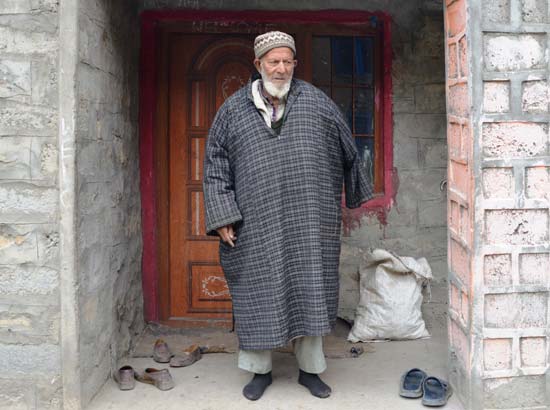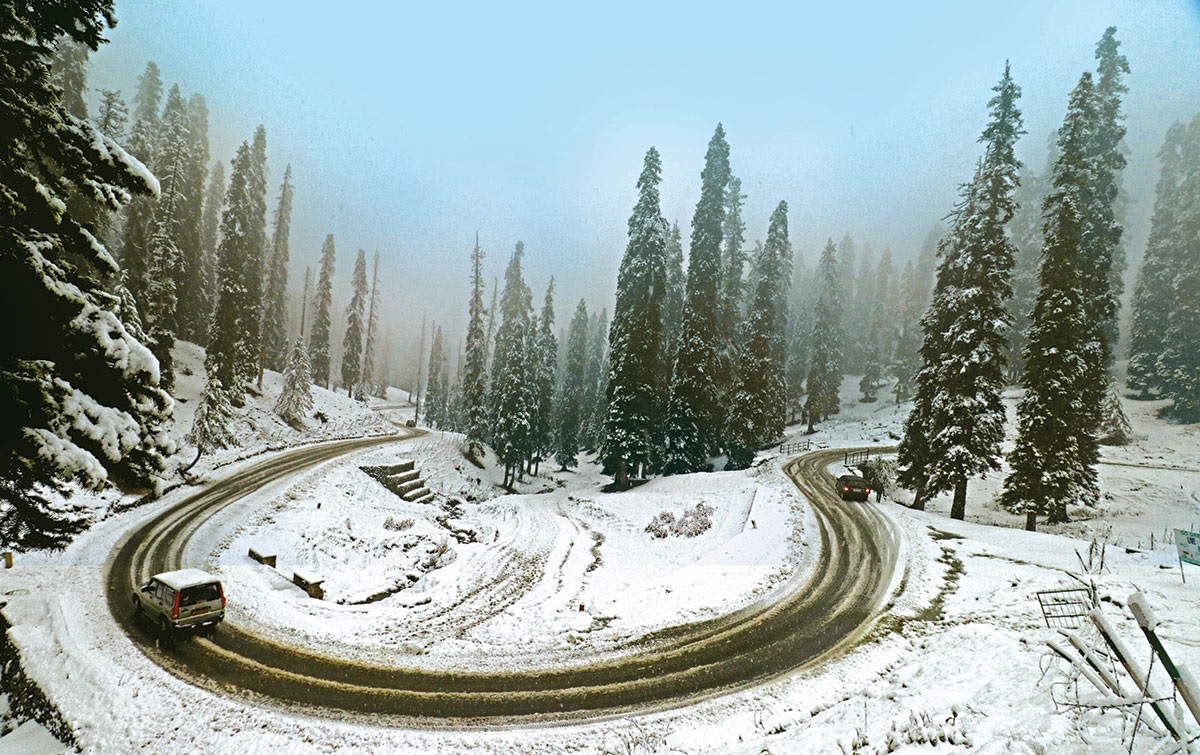Khalid Bashir Ahmad, a poet and historian, on his recent trip to Ladakh stopped over briefly in Matayan to sketch the life and history of once famed village that served travellers on the silk route.

After back-breaking drive up and down the Zoji-la (3528 m), Matayan is the first inhabited village on the Srinagar-Leh Highway, 21 kms ahead of Drass, the world’s second coldest inhabited place after Siberia. The peculiarity of the place is its being the only Kashmiri speaking village in the Ladakh region. Situated at the end of the Minimarg pastureland, the village has over 30 Sunni Muslim Kashmiri families who have been living here since long. Their ancestors have migrated from the north Kashmir valley of Lolab.
Matayan has been a halting point or camping site on the Silk Route through which caravans of traders travelled to and fro Central Asia during old times. Its flat surface, coming as it does as great relief after miles and miles of spirit-dampening assent and descent on the Zoji-la, had made it a natural resting place for the travellers. Travelogues by foreigners trekking to Ladakh and Tibet often mention the place. There was a Runner’s Hut here during the Dogra rule for Dak carrying officials. The village is also witness to the ordeals of Kashmiris taken on forced labour along the treacherous route to Ladakh during that period. It is likely that during those times someone from Kashmir accompanying the traders or travellers as helper decided to settle down here.
On my visits to Ladakh, I have always wanted to speak to someone from the village and know a little bit about the inhabitants. On September 14, 2013, while returning from Kargil I made a brief stopover here and walked into the highway village. It was still early hour of the morning as I had left Kargil immediately after the fajr prayers. While entering the village, I noticed a small boy struggling with water carrying aluminium jug to wash his face outside his house till his mother came and helped him out. Few chicken of local Kashmiri breed and a pair of grey and orange sparrows were pecking grains from the ground as some cattle were grazing in the open field. Young Saajid spotting check jacket was taking out cakes of dried cow-dung from a gunny bag for use as fuel for making morning tea. Two men were busy making bundles of loose firewood, sign of impending harsh winter when temperature in the village drops down to several degrees below freezing point.
I asked for the oldest inhabitant of the village and was directed to the residence of Ghulam Qadir Lone. It was a single storied small house made of stone with Ya Allah inscribed above the door-frame. Dressed in woollen pheran, an aged Lone opened the door and curiously asked what had brought me to him. I told him the purpose of my visit upon which he invited me to have tea inside the house.
The octogenarian boastfully claimed to be the oldest person in Matayan. When I asked his age he took a moment to count the years and said he was 88. I asked him if he was a Kashmiri and he replied in affirmative. His accent was the purest form of Kashmiri speech. He did not exactly know who from his ancestry first settled at Matayan but was certain that it was about two to three hundred years ago that the first inhabitant of the village arrived from Kashmir. “My forefathers came from Lolab in Kupwara”, he said. Lone’s eye sight has been impaired with the left eye having completely lost vision and the right suffering cataract. He has two sons, one serving in the public works department and the other earning a living from driving a Sumo taxi.
Matayan has a population of 433 souls (including 30 households of Balti speaking Shias who have moved in from Sankoo, Kargil over a period of time and live side by side with Sunni Kashmiri speaking neighbours) with a slightly higher female presence at 233. The village is the poorest in Drass sub-division. There is a modest tin-roofed mosque which has been reconstructed only this year. The village market comprises two shops- Sheikh General Store and Zojila Tea Stall. The latter had its shutters down when I arrived there. The village has a middle school and a health centre, besides a few scanty public facilities. Children who want to study further have to go to Pandrass, another highway village 8 kms en-route Drass. Medical emergencies are taken to Kargil which is an uphill task during winters when the village drowns under three to four feet snow with sub-zero temperature.
Life in Matayan is very difficult during spine chilling winters that bring heavy snow resulting in the closure of road to Kashmir and chances of arrival of fresh vegetables for next six months. The village chiefly grows barley and potato in meagre quantity. Vegetables, as other essentials, come from Kashmir or Kargil. Like it was very common in Kashmir till few decades back, the villagers use dried vegetables in winter.
















i am matayan village
thanks for posting usss & ourr village if uu want morei nformation my email id is mentioned above & thanks
i m also from Matayen village.. very thank full to uhh.. its very important to us…we are in minorities in Ladakh and also vulnerable to distinct our culture….if you have more informations then please share in these platforms or even e-mail us… thanks 🙏🏻